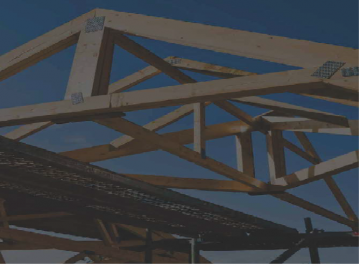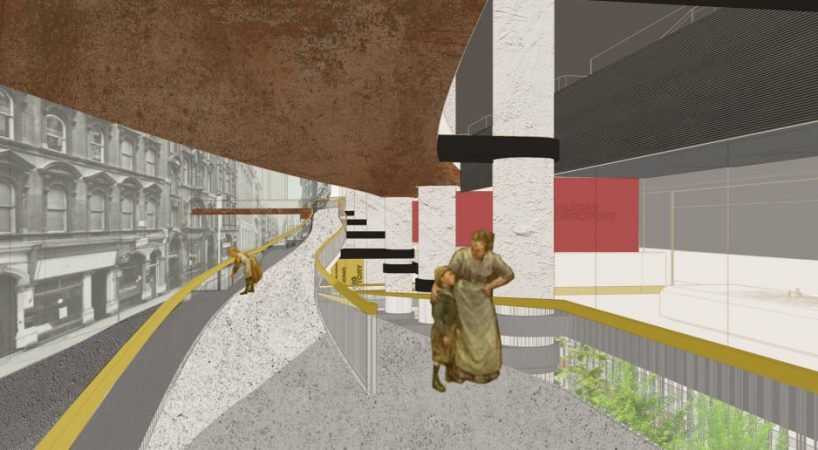BUILDING INDIA

To get a measure of how important the construction industry is to India and its bubbling economy does not take long: just follow the money. It would be easy to start with lists of projects totaling billions in expenditure, or rattle off plans that stretch far into the future, but perhaps a far more telling indicator is the relatively modest investment made by the World Bank in February, 2017.
The global organisation cut a $201.50 million credit deal with India’s government to enhance the quality and equity of engineering education across several of the nation’s states. The deal, the latest phase in a 20 year programme known as the Technical Education Quality Improvement Project (TEQIP), will support some 200 engineering education institutes in the target states to produce engineers of higher quality and so more employable. Over the lifespan of TEQIP it is thought that some three million undergraduate and post-graduate students (as many as 30 per cent of whom may be women) and more than 100,000 faculty will see the benefit of the programme, which is trying to distribute consistent skill levels among graduate engineers entering the labour market across the whole county.
While not all the engineers who will benefit from TEQIP are destined for careers in construction, the sheer size of the industry in India means a fair proportion of them will play some part in it during their working life.
AS THE SIXTH LARGEST ECONOMIC SECTOR IN INDIA THE BROAD TENDRILS OF CONSTRUCTION EMPLOY AN ESTIMATED 35 MILLION OF THE COUNTRY’S 1.3 BILLION POPULATION.
This makes the industry the nation’s second largest source of paid work. It is an industry in need of a greater quantity and quality of engineers if it is to support the country’s economic development, which points back to why both the World Bank and India’s government are involved in a long-term project targeting such a specific skill set. Junaid Ahmad, World Bank Country Director in India, said: “This project (TEQIP) will help India meet its growing demand for highly qualified engineers – a demand which has been growing parallel to its rapid economic growth.”
It is this ongoing and sturdy economic growth that will help to fuel future opportunities for the construction industry across the private and public sectors. India’s GDP was a nudge over $2 trillion in 2015 and has been climbing steeply since the early 2000s, barely dipping for the global financial crisis that saw so many other economies falter. In 2015 GDP growth ticked along at a healthy 7.6 per cent, dogged only by an equally robust inflation rate of 5.9 per cent.
CONSTRUCTION AS A SECTOR MAKES A KEY CONTRIBUTION TO THESE FIGURES, WITH IT GENERATING AN ESTIMATED 7.8 PER CENT OF INDIA’S GDP IN THE 2016 FINANCIAL YEAR4.
While growth in the construction sector has been relatively steady it has not proven itself completely immune to economic challenges. In the final quarter of 2016 the construction sector recorded growth of 2.7 per cent year on year, down from 3.4 per cent the previous quarter. The real estate sector too was hit by a dip in growth, some what sharper then that of construction, with it recording a growth rate of 3.1 per cent year on year, down from 7.6 per cent for the previous quarter. Many have been quick to blame the far reaching impact of the country’s demonetization initiative, which saw the two top denomination bank notes with an estimated value of some 15 trillion rupees – some 86 per cent of all cash in circulation – declared invalid within a very short timeframe. The reduced availability of cash, disruption to business and the ensuing consumer panic have taken some of the heat for the crimped growth figures, but the impact of the changes in bank notes was expected to gradually wane over the early part of 2017.
THE INTERNATIONAL MONETARY FUND (IMF) CALCULATED THAT INDIA RECEIVED $36.02 BN IN NET FDI INFLOW IN 2015-16, AND THE CONSTRUCTION SECTOR STANDS AS THE SECOND LARGEST RECIPIENT OF THIS INVESTMENT .
Although there are still some cash kinks to be worked out of the economy – particularly in the traditionally cash-fueled real estate sector – long-term expectations remain buoyant. In February the IMF said that overall the economy is “growing strongly and remains a bright spot in the global landscape”. Other observers are staying positive too, with a report from professional services firm KPMG and real estate body NAREDCO released in August 2016.
PREDICTING THAT INDIA’S REAL ESTATE AND CONSTRUCTION SECTOR WOULD GROW TO BE THE THIRD LARGEST GLOBALLY BY 2030, CONTRIBUTING MORE THAN 15 PER CENT TO THE COUNTRY’S GDP. AS EARLY AS 2022 THE SECTORS ARE EXPECTED TO PROVIDE EMPLOYMENT TO MORE THAN 75 MILLION PEOPLE.
The power of construction to fuel activity is seen in related sectors within India’s economy. Crucially though, construction is a sector that has the power to draw in the all important foreign direct investment (FDI) bringing new money into the Indian economy.
The country is the third largest steel producer in the world and saw the largest percentage increase in production in 2016, when it produced 95 million tonnes of steel an increase of 7.4 per cent on 2015. The country makes and consumes vast quantities of cement too, ranking as the second largest producer in the world and accounting for 6.7 per cent of global output, with a current capacity of 390 million tonnes. With housing and infrastructure development in construction equipment – traditionally seen as a bellwether for the fortunes of the construction sector – India started showing signs of renewed growth in 2015 after sales had declined for three years in a row. In 2015 the market grew by 2 per cent to 48,913 units and spiked in 2016, when the sales of construction equipment increased by 36 per cent to 66,613 units. Analysts predict more growth could be ahead for the next five years, with some forecasting it will be worth $ 5 billion by the 2019-20 financial year, up from the current $2.8 billion and SUGGEST THAT AS THE INDUSTRY MATURES INDIA COULD EMERGE AS A SIGNIFICANT REGIONAL MANUFACTURING HUB. The Union Budget 2017-18 showed that the government of India is ready to back its construction and real estate sectors too.
IT PRESENTED THE HIGHEST EVER ALLOCATION OF FUNDS FOR INFRASTRUCTURE DEVELOPMENT AT INR 3.96 LAKH CRORE, OR $61.1BN, AND FOR THE FIRST TIME CLASSIFIED AFFORDABLE HOUSING PROJECTS AS INFRASTRUCTURE.
Other notable changes intended to spur building projects on included a relaxation of area requirements and time constraints for project completion, plus a change in how capital gains tax is applied to projects. The budget, combined with some of the long-term plans for development, indicate that the government is looking to give the construction sector a boost, not only so it can operate more easily, but also so the industry can be better placed and in a healthy condition to help pursue the country’s development needs.
SMART CITIES
In 2015 the United Nations estimated that 32.7 per cent of India billion-plus people live in its cities.
Over the preceding five years that population had been growing at a rate of 2.4 per cent, well ahead of the country’s overall population growth rate of 1.3 per cent. As the proportion of Indians living in cities gradually expands – it could reach 50 per cent by 2030 – those cities need to improve if that growth is to be sustainable. With these pressing numbers as its motivator INDIA’S MINISTRY OF URBAN DEVELOPMENT LAUNCHED ITS SMART CITIES MISSION, A NATIONWIDE COMPETITIVE PROJECT TO CREATE 100 SMART CITIES AND SPUR NEW URBAN DEVELOPMENT THINKING KICKED OFF IN 2015 WITH A FUNDING POOL IN EXCESS OF $7 BILLION, the initiative has so far attracted 60 winning proposals from cities looking to improve their performance in everything from affordable housing, public spaces and technology integration, to utility delivery, transport and waste management. Thus the initiative claims to have positively impacted the lives of more than 72 million city dwellers.
INFRASTRUCTURE
Infrastructure development is a central focus for India, where there is a need for everything from improved roads and transport infrastructure to more power. As such, it is attracting significant investment, primarily from the government’s coffers, but supported by a host of private sector investment. Some estimates have put the amount India needs to spend on infrastructure over the next five years at some $454.83bn.
The union budget for 2017-18 has put $61.1 Billion of this on the table, while the government has increased pressure on performance in some key areas. For instance the pace of construction of roads under the Pradhan Mantri Pradhan Mantri Gram Sadak Yojana – a nation wide project to build all weather roads for unconnected villages – has accelerated to reach 133 km per day in 2016–17, up significantly from an average of 73 km per day between 2011–14. While the country is dependent on coal-fired power plants for 61 per cent of its power generation. Driven by rapidly declining prices for solar energy, these ambitious plans could make India a central player in the global renewables market.
HOUSING
India’s housing market is one of contrasts. On the one hand localized oversupply at the higher end of the market combined with a temporary blip caused by demonization have seen supply outstrip demand and foreign direct investment in property dip. On the other hand there is a significant urban housing shortage in the affordable homes segment, WITH SOME ESTIMATES PUTTING THE SHORT FALL AT 19 MILLION UNITS.
The government is acting on both counts. It has moved to protect consumers at the upper end of the market where developers will need full approval from the authorities before selling properties off plan, while the funds this raises will have to be held in escrow from May 2017. On the affordable housing front the changes are even more significant with the Union Budget for 17-2018 granting affordable housing infrastructure status, thus letting it draw form the considerable infrastructure pot of money the country has set aside for development. Temporary market conditions aside, the underlying demand will remain enormous as India’s population continues to urbanise.
COMMERCIAL PROPERTY
Commercial property has a slightly clearer road ahead than its residential counterpart thanks to the strong leasing performance of Grade A office space, with 2016 seeing the market enjoy a 9 per cent increase in leasing activity year on year. Thanks to the combined power of the banking, financial services, insurance and IT sectors, all of whom appeared hungry for quality floor space, 2016 saw 43 million square feet of space leased. An overflow of demand for quality space has also driven leasing activity for projects still under construction, activity which accounted for nearly a quarter of the space booked during the year.
SUPPLY HAS STARTED TO RESPOND TO DEMAND, WITH AN ESTIMATED 35 MILLION SQUARE FEET OF NEW SUPPLY INTRODUCED TO THE MARKET IN 2016 , 13.2 MILLION SQUARE FEET OF THAT ADDED IN THE FINAL QUARTER 2016, A 78 PER CENT QUARTERON- QUARTER INCREASE.
Much of this activity took place in Bangalore and Mumbai, which accounted for an estimated 64% of all completions reported in the fourth quarter. The retail sector has a much more limited impact on prospective returns for commercial property developments, despite it having a projected value of $1 trillion by 2020 . A shortage of space in India’s best malls has kept leasing volumes low in its busiest centers and just 1.9 million square feet of organised retail space was added to the market in all of the second half of 2016.
SOCIAL INFRASTRUCTURE
The development of cost effective social infrastructure that can deliver both health care and education to underserved rural areas in India could be a crucial area for private sector investment in the future. India has a need for an additional 600,000 to 700,000 healthcare beds and it needs them in the next five to six years. Estimates suggest this adds up to a $25-30 billion investment opportunity, with significant opportunity for the participation of the private sector through private equity funding and public private partnerships. Any new investments will enter a healthcare market currently worth around $100 billion, a figure forecast to hit $280 billion by 2020, representing a compound annual growth rate of more than 20 per cent.
Demands for development are on a similarly large scale in a country that has the largest higher education system in the world, enrolling more than 70 million students. Over the last two decade the country has created additional capacity for more than 40 million students, space that it will need as forecasts predict it will have the world’s largest tertiary-age population by the end of 2020. The higher education sector currently sees spending of over $6.93 billion and it is expected to grow at an average annual rate of more than 18 per cent to reach $34.87 billion in next 10 years. In the 2017-18 Union Budget, the government budgeted for an outlay $11.95 billion for the education sector for financial year 2017-18, a 9.9 per cent rise the previous year.
Report Courtesy www.thebig5constructindia.com































